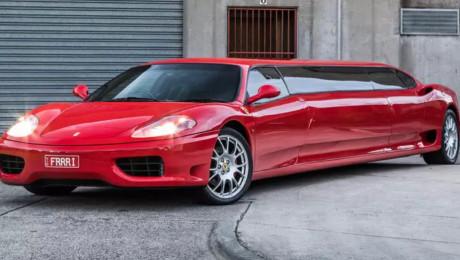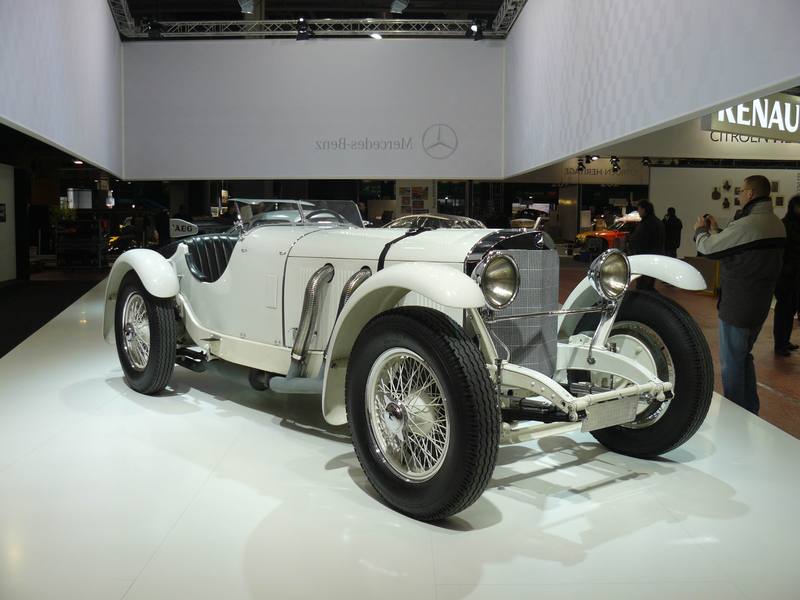
Australia sells the fastest car in the world
All I want for Christmas: The world's fastest car, a Bugatti Veyron, has been sold to a mystery shopper in Australia, even though it's not allowed to drive on local roads.
The world's fastest car, a Bugatti Veyron with a top speed of 431 km/h, almost twice the speed at which planes take off, has been sold to a mystery shopper in Australia despite being off-limits to local roads. .
A used Veyron showed up at the Classic Throttle Shop in Sydney, parked next to a classic Mini Moke and an old Porsche.
It was listed for less than a week and the company says it was sold to an anonymous buyer.
But the buyer will not be too anonymous: this Veyron is said to be the only one in Australia, apart from the one that briefly flew to Australia for a demonstration lap at the 2009 Formula Grand Prix.
"We don't want to divulge any details," said Matthew Dixon, salesperson for the Classic Throttle Shop. "The owner wishes to remain anonymous."
The company does not disclose how much the buyer paid, but the new Veyron cost €1 million plus taxes.
If sold as new in Australia, the Veyron would be worth about $3 million after exchange rates, taxes and luxury car tax (33 percent of the price above $61,884).
But the Veyron was never officially sold by Bugatti in Australia because it was only built in left hand drive.
Collectors around the world have given the car the status of an icon.
Earlier this year, American talent scout, TV star and One Direction creator Simon Cowell sold his 2008 Veyron at auction for $1.375 million.
The Bugatti Veyron is powered by a massive 8.0-liter W16 engine with four turbochargers. It originally had 1001 horsepower but was upgraded to 1200 horsepower in 2012. It accelerates from 0 to 100 km/h in about 2.5 seconds, as fast as a Formula XNUMX car.
Since the 400, only about 2005 cars have been built. Bugatti sold out of the 300 coupes originally built, and fewer than 40 of the 150 roadsters introduced in 2012 remained before production ended at the end of 2015.
Other specialist companies claim to have beaten the Veyron's record, but these are one-time specials and the top speed is not up to Guinness World Records standards (over 1km average in both directions, subject to weather changes and test track conditions). .
Meanwhile, Bugatti has officially abandoned plans to build what was to be the world's fastest sedan and has officially confirmed that it will build a successor to the Veyron.
Bugatti boss Dr. Wolfgang Schreiber told Britain's Top Gear magazine earlier this year: "There won't be a four-door Bugatti. We have talked many, many times about the Galibier, but this car will not come because ... it will confuse our customers.”
Bugatti has reportedly lost every one of the more than 400 Veyrons it has built, despite a price tag of more than €1 million plus taxes.
“With Veyron, we have placed Bugatti at the top of every supersports car brand worldwide. Everyone knows the Bugatti is the ultimate supercar,” Dr. Schreiber told Top Gear. “It's easier for current owners and others interested to see if we'll do something similar to the Veyron (next). And that's what we're going to do."
Bugatti unveiled the Galibier sedan concept in 2009, just after the global financial crisis hit, but its development has been relatively quiet since then.
When asked if Bugatti would release the much-rumored Veyron after it released a special version in 431 capable of reaching speeds of up to 2010 km/h (compared to the original's 408 km/h top speed), Dr. Schreiber told Top Gear: “We definitely don't make SuperVeyron or Veyron Plus. There will be no more power. 1200 (horsepower) is enough for the head of the Veyron and its derivatives."
Dr. Schreiber said that the new Veyron will have to “redefine the benchmarks… and today the benchmark is still the current Veyron. We are already working on it (the successor)."
The German Volkswagen group bought the French supercar marque Bugatti in 1998 and immediately began work on the Veyron. After several concept cars and numerous delays, the production version was finally unveiled in 2005.
During the development of the Veyron, engineers struggled with cooling the massive W16 engine with four turbochargers. Despite having 10 radiators, one of the prototypes caught fire at the Nürburgring race track during testing.
The original Veyron, powered by a turbocharged 8.0-liter four-cylinder W16 engine (two V8s mounted back to back), had an output of 1001 hp. (736 kW) and a torque of 1250 Nm.
With power sent to all four wheels via an all-wheel drive system and a seven-speed dual-clutch DSG transmission, the Veyron could accelerate from 0 to 100 km/h in 2.46 seconds.
At top speed, the Veyron consumed 78 l/100 km, more than a V8 Supercar race car at full speed, and ran out of fuel in 20 minutes. For comparison, Toyota Prius consumes 3.9 l/100 km.
The Bugatti Veyron was entered into the Guinness Book of World Records as the fastest production car with a top speed of 408.47 km/h at Volkswagen's private test track in Era-Lessien in northern Germany in April 2005.
In June 2010, Bugatti broke its own top speed record with the release of the Veyron SuperSport, which uses the same W16 engine but has been upgraded to 1200 horsepower (895 kW) and 1500 Nm of torque. He accelerated to a stunning 431.072 km / h.
Of the 30 Veyron SuperSports, five were named SuperSport World Record Editions, with the electronic limiter disabled, allowing them to reach speeds of up to 431 km/h. The rest were limited to 415 km/h.
The original Veyron cost 1 million euros plus taxes, but the fastest Veyron of all time, the SuperSport, cost almost twice as much: 1.99 million euros plus taxes.
In September, an American turned a 2004 Holden Monaro into a copy of a Bugatti Veyron.
A Florida auto restorer advertised a homemade recreation on an online auction site eBay and wanted someone to pay $115,000 so they could finish building it.
The backyard plastic-bodied build was based on a 2004 Pontiac GTO, which is the American version of the Holden Monaro.
